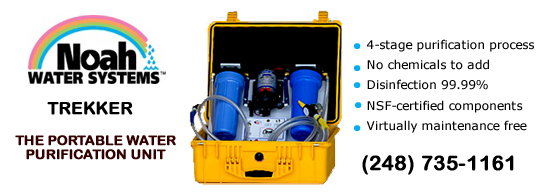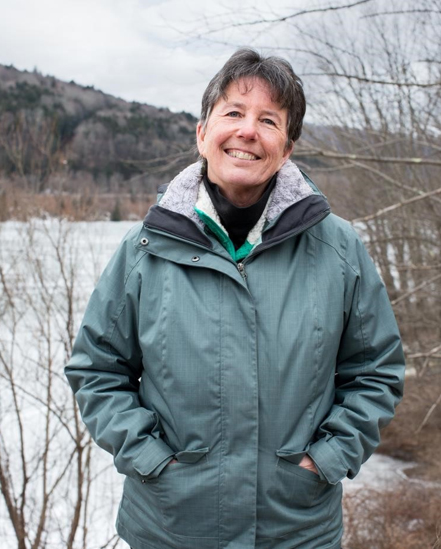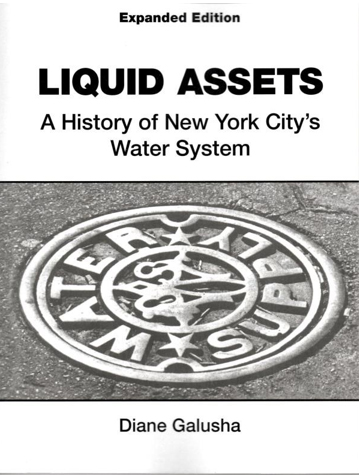Features
Update 2022/1/9
WTwomen
brought to you in part by

Diane Galusha, Author of Liquid Assets A History of New York City’s Water System
By Suzanne Forcese
“I was the editor of the Catskill Mountain News in Margaretville, NY from 1989 to 1996. This was a time when NYC and many upstate town and counties were locked in complex and often hostile talks about future management of the 2,000 square mile watershed containing the city’s 13 collecting reservoirs. I needed a resource to help me understand the history that was informing these often emotional discussions. Finding none, I decided to write one.”
--Diane Galusha

Clean water advocate and former journalist, with a passion for history, Diane Galusha explored the story of New York City’s water system while also serving as communications director and education coordinator with the Catskills Watershed Corporation. Liquid Assets juxtaposes the vision, ingenuity, daring, sacrifice, and heartbreak of one of the world’s most efficient water systems. - Photo taken on a bridge over the Pepacton Reservoir, Courtesy Heather Phelps-Lipton
In this exchange, WATERTODAY discovered how thirst shaped America’s largest city and the spirit behind one woman’s quest to reveal the facts.
WTNY: You are still quite active giving talks about the book that was first released in 1999, and more recently updated to an expanded version -- with 36 new pages and a portfolio of color photos, detailing infrastructure projects, watershed protection programs, conservation efforts, recreation, and historic preservation initiatives. You have said that New York City’s water is your favorite topic. Please elaborate on that.
Galusha: I love peeling back the story for New Yorkers who usually haven’t a clue where their water comes from. Chances are they never think about it. But when they hear or read about the real live people who over generations planned the system, struggled to build it, sacrificed land and legacy – well, filling the tea kettle suddenly has new meaning.
WTNY: Why is history important to you?
Galusha: Studying history is grounding and reassuring. Surely if people in the past (one writer described them as “us in other clothes”) survived all manner of misery and disruption, then we will prevail too. Losing sight of this continuum, and our part in it, is to deny our responsibility to and optimism for the future.
WTNY: You had to search for a history for which there were no records. How did you manage this?
Galusha: I studied journalism in college and have always been a curious person, so I felt it natural to be asking questions and helping other people understand the situation.
I started by finding books and memoirs that did exist, and by looking at a map to determine all the towns that had been impacted by the construction of reservoirs and the connecting tunnels and aqueducts. Then I contacted the libraries, historical societies, municipal archives, and museums in those places. I also went to New York City's many repositories, including the NYC Department of Environmental Protection’s archives which were just being made accessible. In conversations with historians and just by word of mouth I got the names of people who had worked on these projects, or been displaced by them, so I set up personal interviews with them. There was a lot of driving (I live 3 hours from the city and 1 to 3 hours from most sources). I started with the most recent reservoirs (the last was finished in 1965) and worked my way back to colonial days!
WTNY: Sounds like material for a movie. You were also working full time while traveling about and researching.
Galusha: Weekends and days off for like five or six years were spent on this. I was raising a young son at the time and to this day I don’t know where I found the stamina, or he found the patience!
WT: What is your earliest memory of the importance of water?
Galusha: I grew up in a small town not far from the Cannonsville Reservoir, which the city built in the late l950s and early ‘60s. Though our property was not taken, the business run by my father and his brother was severely affected as many customers were displaced and were forced to move away. I distinctly recall his anxiety as he prepared to face city lawyers to argue his case for compensation. And I remember a Sunday drive when he took us to see the smoldering wreckage of the community at Cannonsville as it was being wiped from the map. I didn’t fully appreciate it for many years. The need for water was the cause of all this trauma.

The book reveals the stories of engineers, politicians, contractors and laborers (many of whom were immigrants) who built the vast network of tunnels and dams. But an extraordinary price was paid by thousands of upstate residents who were displaced by the Croton, Catskill, and Delaware reservoirs. The City of New York had claimed the counties of Westchester, Putnam and the Catskills by eminent domain to build reservoirs for the millions of people who live a long way away. In 1997 NYC passed its watershed regulations in an MOA bartered between municipal officials and community leaders upstate.
WTNY: What have been your most significant understandings about water?
Galusha: It’s kind of a startling fact if you think about it. All the water that will ever be on Earth is here today. There will never be any more. They have not figured out a
way to manufacture a synthetic version. So, to put it another way, we are still drinking and wasting and polluting and watering our gardens with the water that the dinosaurs drank millions of years ago. It’s kind of a sobering thought that this is all we are going to have. It is basically what makes Earth -- Earth. Water is what makes life here possible yet just a fraction of one percent of all the water on earth is accessible and potable. The rest is in the salty oceans or locked up in the ice sheets or in deep aquifers or in the atmosphere or hopelessly polluted. One billion people --perhaps one in ten souls on the planet -- do not have access to an adequate water supply to maintain hygiene and good health. Water, not oil or the lust for land or territory or terrorist threat is the trigger for the next global conflict. The lack of water breeds panic, desperation, and rage. Thirst is a primal motivator.
Thirst has transformed landscapes (think of the great Dust Bowl or the draining of the Colorado River or the creation of vast lakes where once was dry land). It has changed the relationship between governments and individuals forced to relinquish private property for water infrastructure Worldwide where billions of people don’t have a reliable clean source of water, thirst has pushed many to migrate, a situation that only gets worse with climate change.
WTNY: Before your retirement, you served as communications director and education coordinator with the Catskills Watershed Corporation. You have also said that education starts with children. What would you say to a child? Parents? Teachers?
Galusha: To a child: Did you know the water you use to brush your teeth is the same water the dinosaurs drank? The water we have on earth is all we will ever have. Take care of it and don’t waste it.
To parents: Find out where your water comes from and who’s responsible for keeping it clean and running. Do you have a well? What’s happening in the vicinity that might impact that aquifer? Be conscious of how your actions may affect the water quality elsewhere. Remember we all live downstream.
To teachers: Water can be used to illuminate so many fields of study: environment and ecology, engineering, immigration, public policy, the economy, social history, technology, our changing climate. It’s the ultimate multidisciplinary curriculum.
WTNY: Who are your water heroes?
Galusha: The scientists, technicians, laborers, and engineers who keep the water flowing; the environmental volunteers who protect irreplaceable streams and wetlands; and the activists and watchdogs who hold everyone’s feet to the fire to ensure that drinkable water remains an unquestionable birthright for future generations.
WTNY: What are your current projects?
Galusha: I am President of the Historical Society of the Town of Middletown, Delaware County, NY. New York City’s water did indeed have an oversized impact on this area, but there were 200 years of European immigrant history here before that happened, and a thousand years of Native American occupation. Lately, I’ve been delving into African-Americans in our region, including their enslavement. So, I am researching and writing about all that, and finding it ever so fascinating.
WTNY: Looking in the rear-view mirror of your life, what have you learned and how has that shaped your vision of the future?
Galusha: The choices I made led me to learn about the most critical substance on the planet. I have been privileged to share some of what I have learned with anyone interested. My vision – Peace, love, and clean water for all.
WTNY: One last request. Please give our viewers something to think about.
Galusha: When you drink the water...remember the spring.
|





